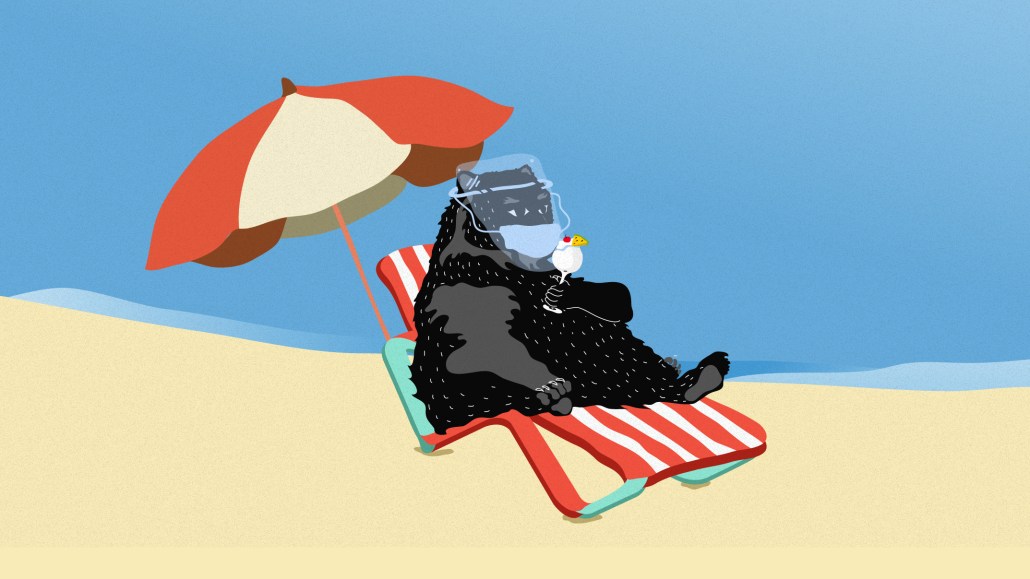‘Boomer spring break’: Alaska Airlines is creating its own hype house for boomer influencers

When it comes to influencer strategies, most brands have set their sights on millennial and Gen Z influencers. Alaska Airlines is taking a different approach this spring: The airline is on the hunt for boomer influencers to create content at its own AK Boomer House later this year in California.
With boomers considered those born from 1946 to 1964 being many of the first people vaccinated in the United States, the ability to get back to travel is more prevalent for that audience. So too was the pent-up demand, according to Natalie Bowman, director of marketing for Alaska Airlines.
“The big insight we were seeing is that as travel was coming back we were noticing that the audience that was most anxious to travel and the audience we were hearing the best stories from were the boomers,” said Bowman. “They were the one who’d been cooped up the longest, under the most stringent rules and getting vaccinated first.”
With that in mind, the airline is looking to celebrate boomers’ ability to return to travel with a “boomer spring break” mindset, explained Rachel Carlson, creative director at Mekanism, the agency behind the boomer influencer strategy.
The airline is modeling the strategy after other influencers’ affinity to live with other influencers, oftentimes appearing in each other’s videos. A gaggle of teens who have gone viral on TikTok popularized the phrase The Hype House, the name of the space they cohabitate.
“Hype houses are this Gen-Z, TikTok arena,” said Carlson, when asked why the brand wanted to create a hype house. “In keeping with the merging of a young person’s game with spring break, hype houses are also a young person’s game so [we decided] let’s just put these two things together.”
Overall, the airline is looking to find 8-10 boomer influencers for the AK Boomer House — which will actually be a hotel in California — to create content that would appear on their social channels as well as on the airline’s feeds. The airline will provide video equipment at the house as well as the help of a choreographer to help the boomers with their content — which will mostly appear on Instagram and TikTok. They will live there for two days to work together and film content. Influencer payment will be dependent on the influencers reach and rate card so it’s unclear how much they will be paid but “they will be compensated,” explained Bowman.
Currently, the airline is spending roughly 60% of its media budget for the campaign on digital and social channels including Instagram and TikTok with ads aiming to not only get boomers to travel via Alaska Airlines but enter to become a boomer influencer and stay at the house. Out-of-home spots make up the other 40% of the media budget.
According to Kantar, Alaska Airlines spent $10.8 million on media in 2019 and $9.1 million on media in 2020; those figures exclude media spending on social platforms as Kantar doesn’t track that.
So far, the biggest difficulty has been finding boomer influencers for the airline as “there are not a lot of boomer influencers,” said Bowman.
That’s a common problem for brands looking for boomer influencers, according to Danielle Wiley, CEO of influencer marketing shop Sway Group. “We get so many requests for boomer programs and the biggest issue we have is finding enough boomers to populate it,” said Wiley, adding that of the 35,000 influencers in the agency’s network just under 3% of them are boomers.
That being said, most of the brands seeking boomer influencers are in “unfun” categories like healthcare issues looking for pitchmen to tout products to help with health issues that come with getting older. Tapping boomer influencers for more fun campaigns like Alaska Airlines’ makes sense to Wiley as “the reality is boomers have so much money and they’re spending a lot of their time online so recognizing them as an audience and not pigeonholing them into [healthcare issues will benefit brands.]”
Aside from the hype house campaign and the boomer influencer program, Alaska Airlines is among the travel brands returning to advertising after a difficult year. Typically during the summer, the brand wouldn’t be spending its media dollars in a significant way. That’s not the case this year as the airline will spend roughly 25% more during the summer than it did in 2019, per Bowman.
“The summer is typically when an airline wouldn’t spend as much because people are traveling and the trips have already been planned,” said Bowman. “It’s different this year.”
More in Marketing

Pitch deck: How Amazon is recasting Twitch as a core part of its CTV pitch
Amazon is positioning Twitch as a defining asset in its CTV ambitions.

Netflix transforms former mall department stores into experiential venues
The location in Dallas opens this week, and one at the King of Prussia mall near Philadelphia opened last month.

Future of Marketing Briefing: AI has created a new talent paradox in programmatic agencies
The job isn’t execution anymore. AI handles that. The job is judgement.








